Their ''super neobaroque'' definition design is that it contains meaning beyond simply shape, material, and technique. This idea is based upon a very human-centered design foundation (where that which is being created must serve human needs), as well as empathic design (think the two most-neglected of the three pillars of sustainability: environmental and social, which complement the third, economic) and a more ethereal quality in its connection to art. Lots of the design ethos that they spoke of are things that many people currently studying design can attest already exist and are not exclusive to this group of designers. Though I might argue that their definition of design can be its definition, in general, without the monicker ''super neobaroque'', I did find myself interested in many of the pieces they had on display.
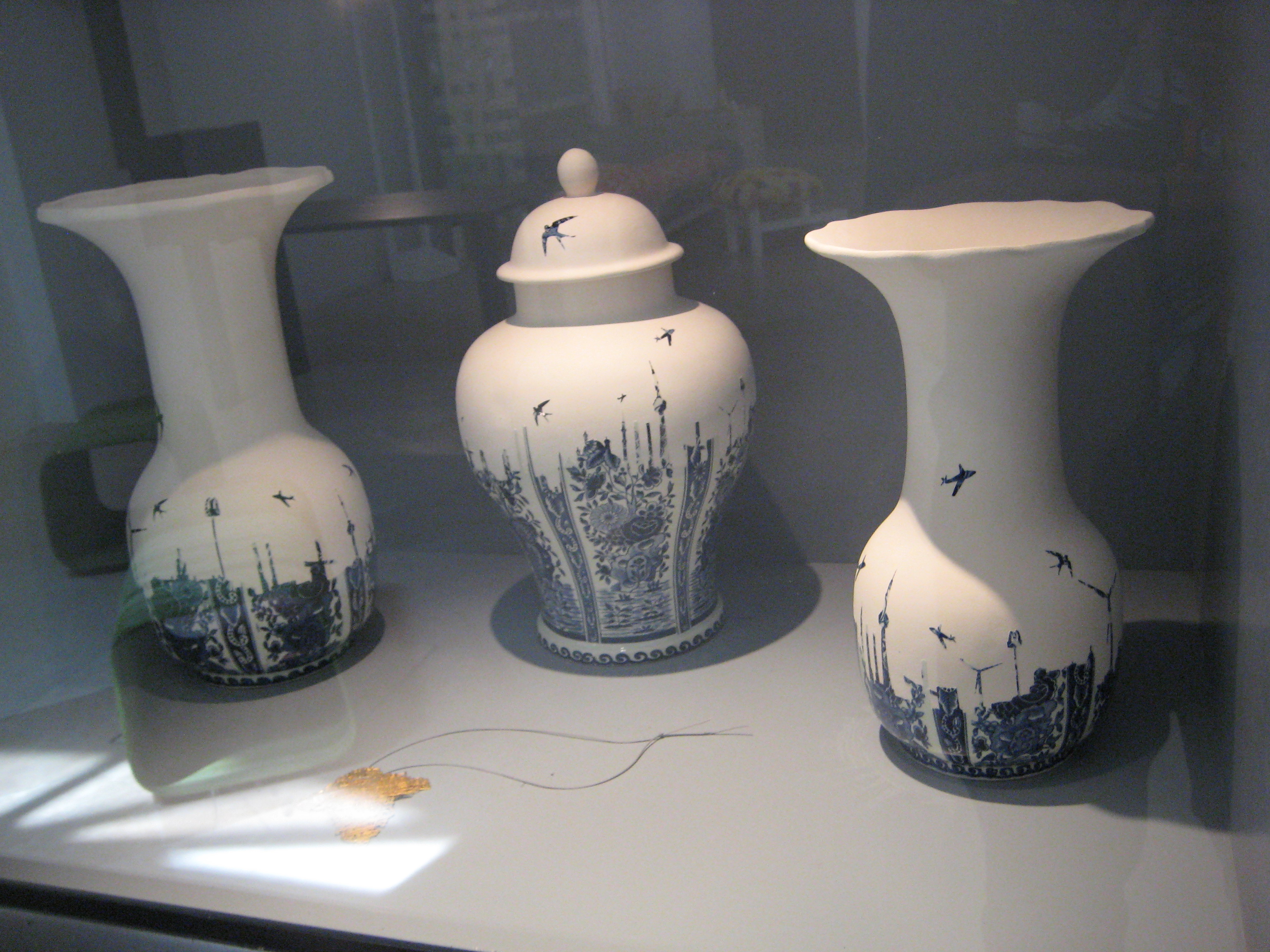
This piece is by Jo Meetsters and is created from old pottery. Like many of the old pieces of pottery I've come upon in some of the museums of Natural History here in this older part of the world, pottery contains stories and history on their surface. Here Meetsters recreates that experience by sandblasting off the old coating to leave patterns with signs of modern society.
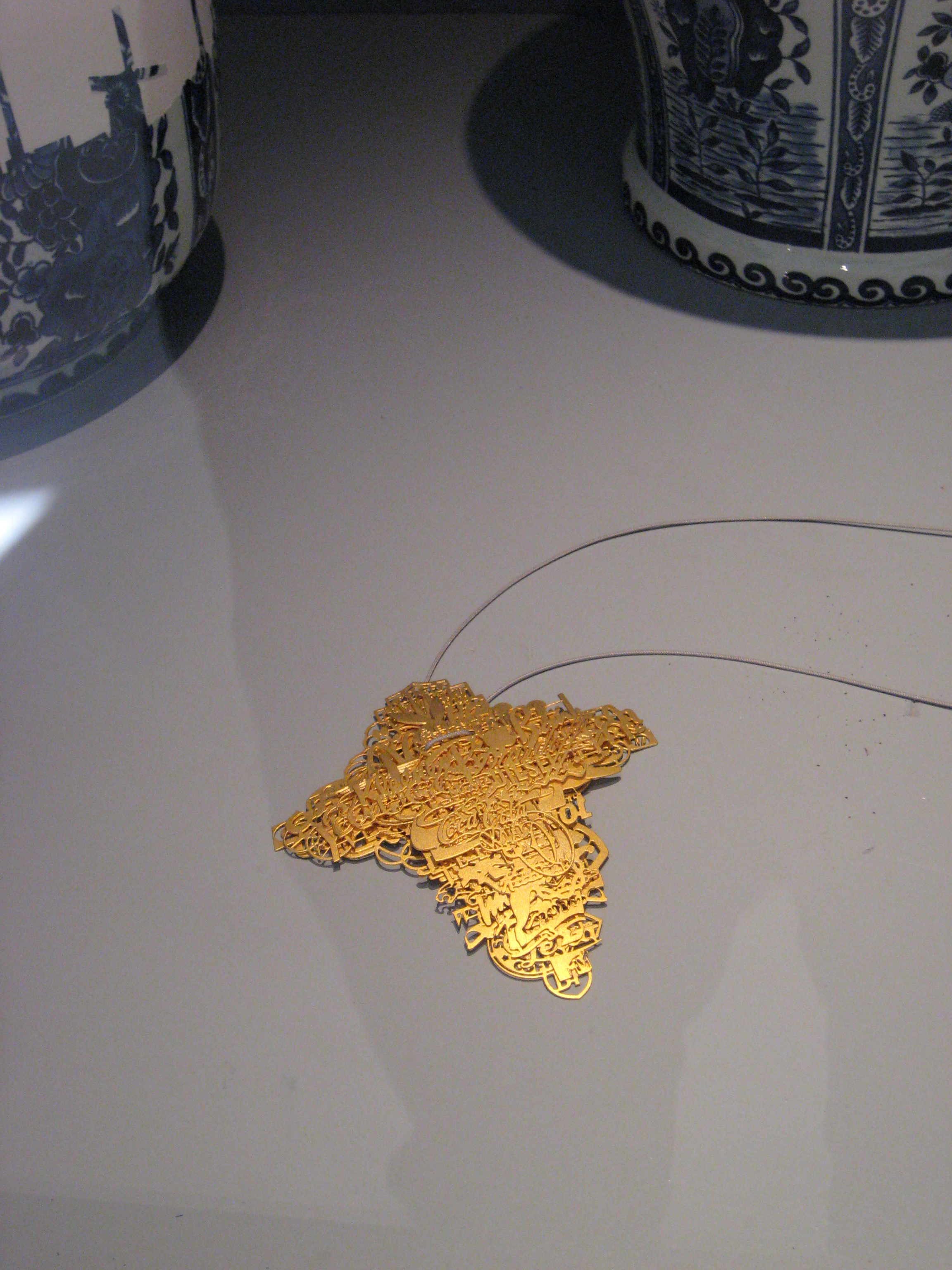
This piece by Frank Tjepkema highlights how consumption has become the new religion in contemporary society and has thus created a cross out of gold made from logos of multinational brands.
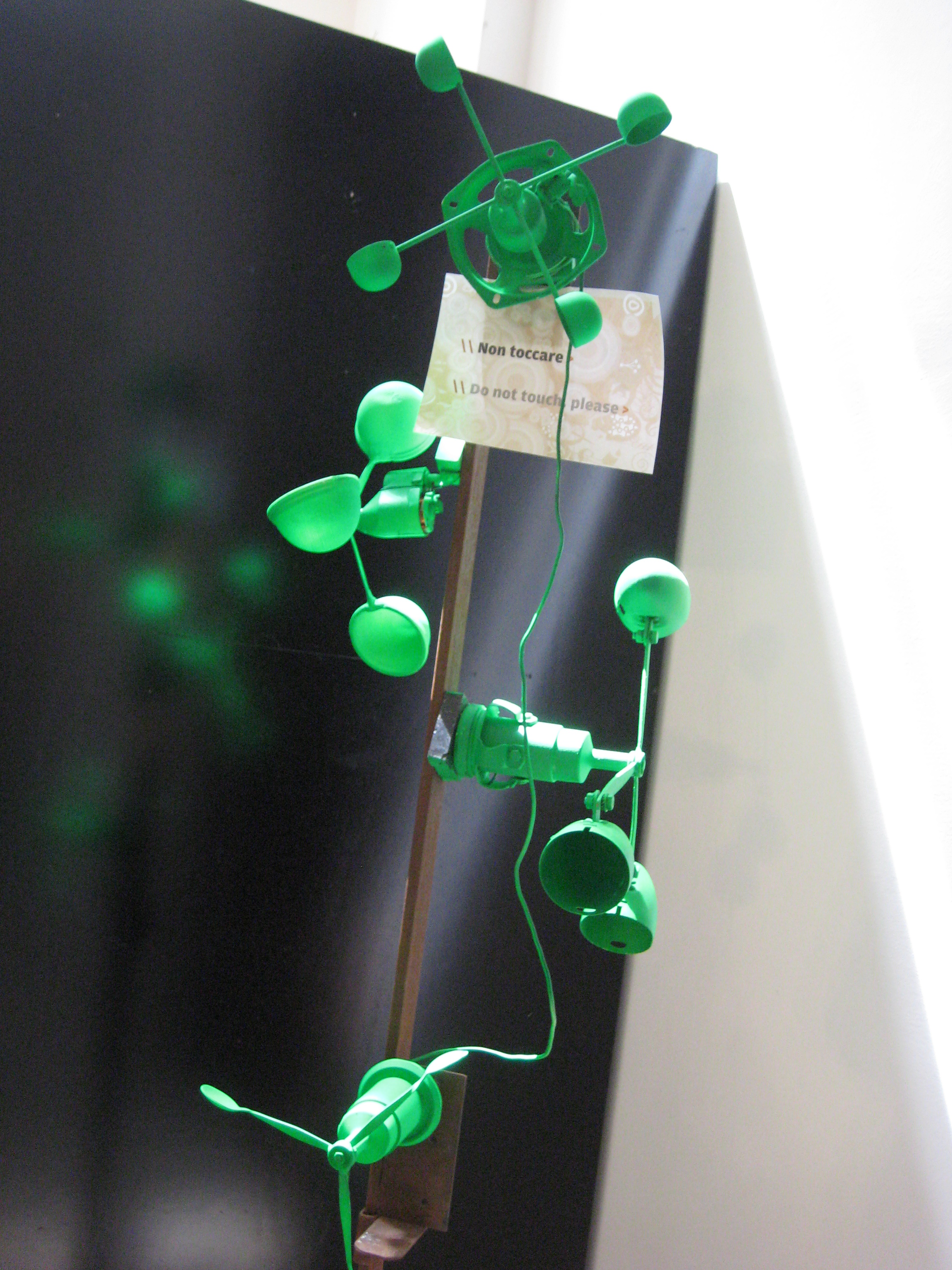
''The Hitchhiker'' by Hadas Zemer Ben-Ari is a piece designed to take public spaces and feed of off them for your own personal benefit. This is specifically designed to be placed out the window of a moving train which will then rotate the mini-wind turbines to power personal electronics. (While Ben-Ari argues that this is essentially free energy, the engineer and skeptic in me points out that it is actually just causing the train to run less efficiently and thus waste gasoline. But cool idea, nonetheless.)
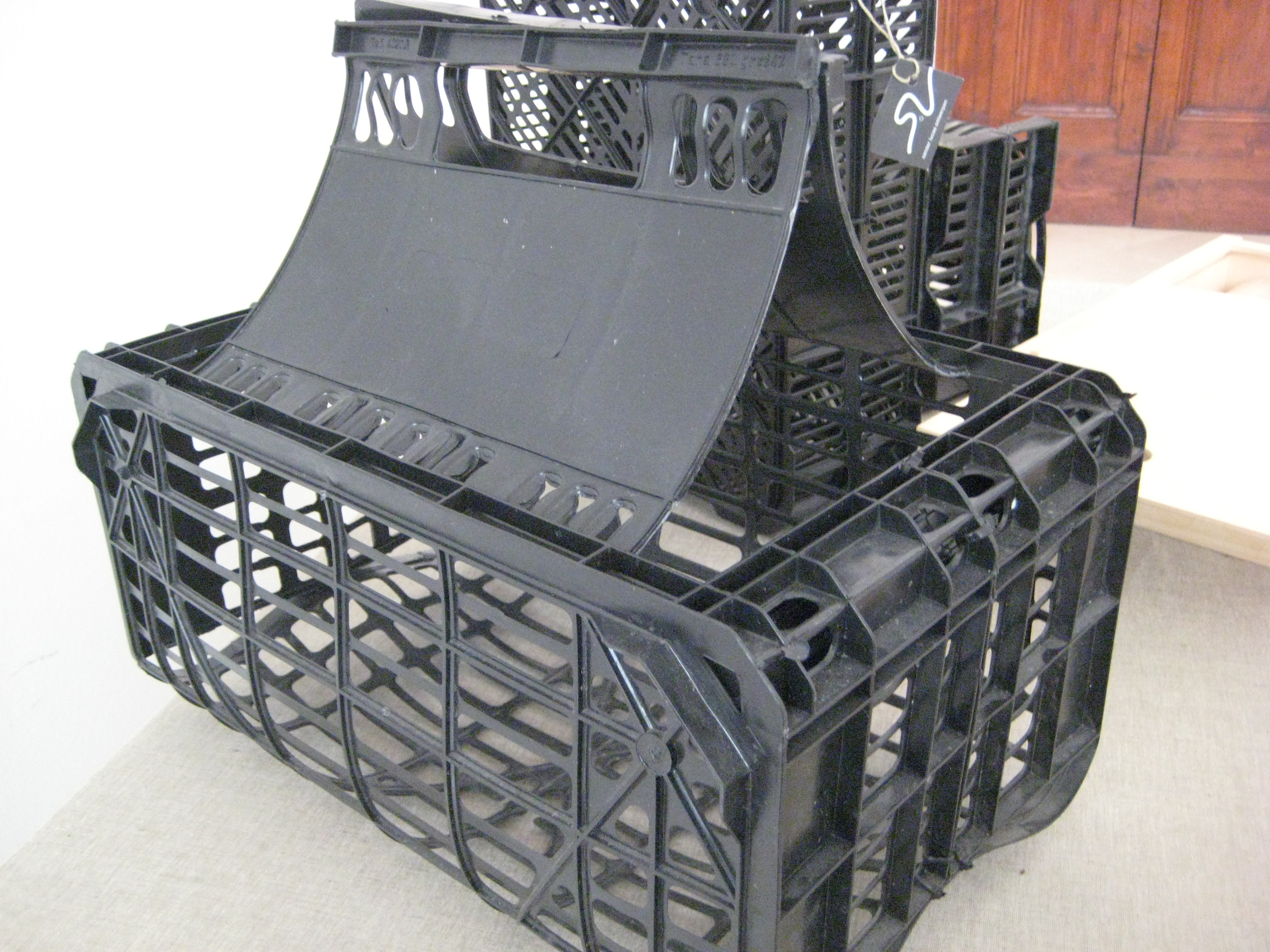
Sander Lucas's creation is the simple repurposing of an old vegetable crate into a more useful basket.

These stools by Frank Willems were born from Willems' observation that mattresses are very difficult to recycle. Thus he has started to collect them and repurpose them by making them into completely new furniture after coating them with a new soft rubber coating (Wonder what the environmental impact is of that rubber? LCA, anyone?).
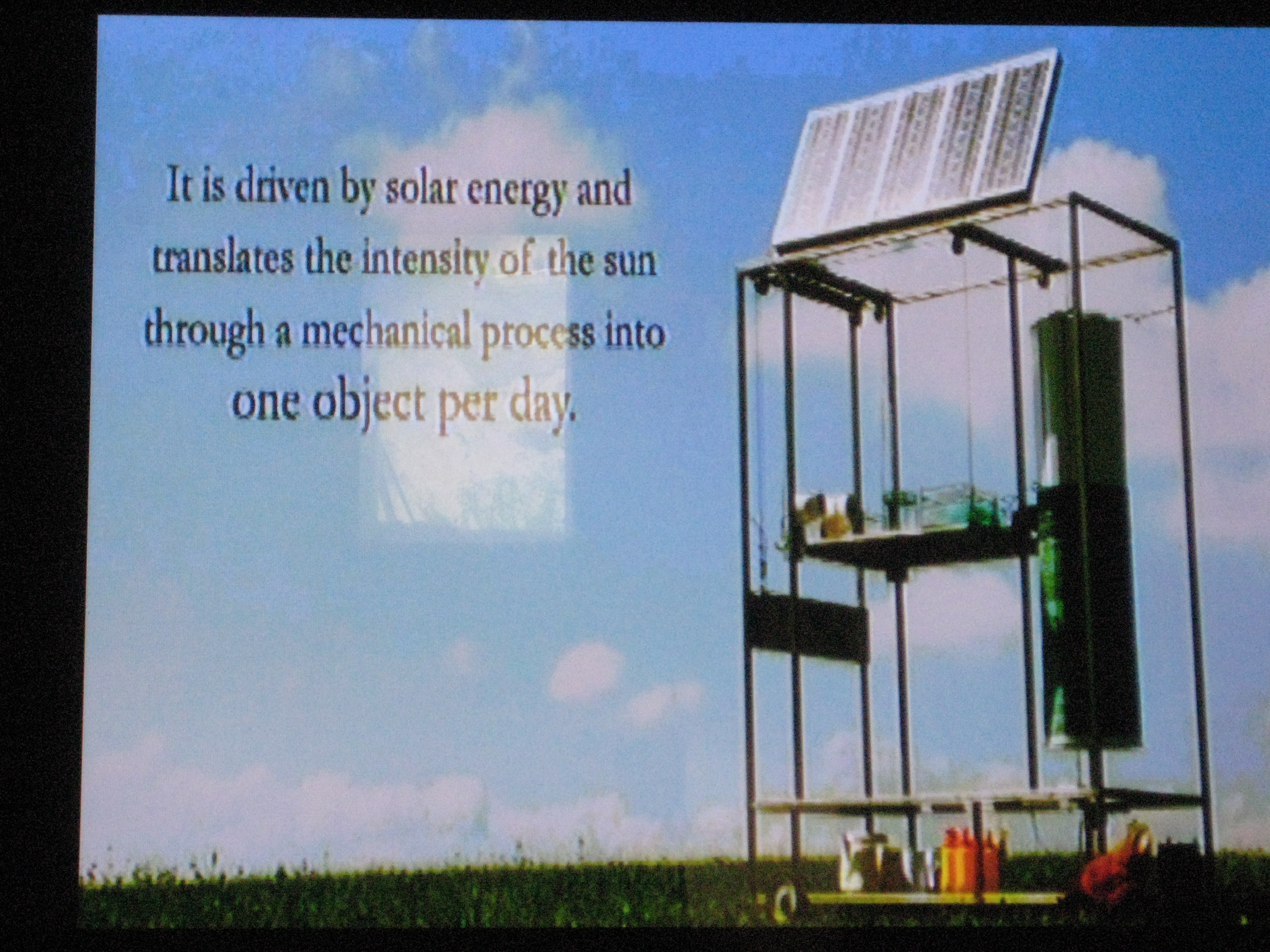
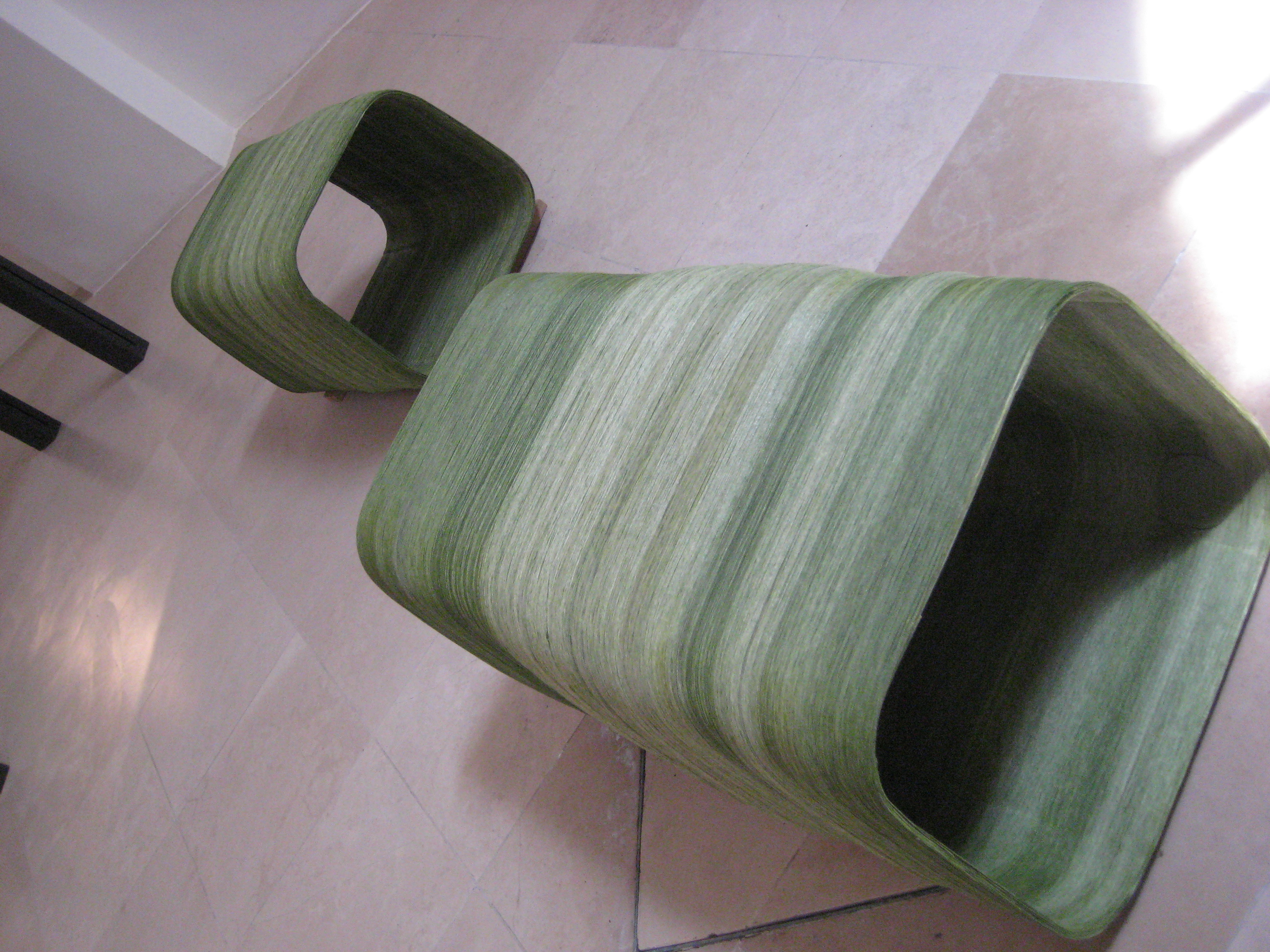
This is probably the coolest piece that I saw at this exhibition...it's called ''The Life of a Tree'' by Tomas Traxler. It is a machine that creates little stools that tell the story of the day in which it was made. These stools are made by fiber being wound in the polygonal shape after being passed through a type of epoxy and coloring. The speed at which the fiber is wound depends on the amount of sunlight that exists during the day (as the machine is powered using solar panels)...more sunlight, the faster the fiber is wound...less sunlight, slower it is wound.
Thus if it is a sunny day, the machine will spin lots of fiber and will make a longer stool. And because the fiber is passing through the colored dye more quickly, the stool will be a paler green. The machine reacts in real-time to the conditions, so you can actual read how the sun patterns of the day in which each stool was created by looking at areas where the stool is darker (when there was less sun at the time of spinning) or where it is lighter (when there was more sun at the time of spinning).
It's a piece which can tell the story of its own creation.
No comments:
Post a Comment